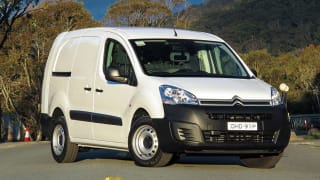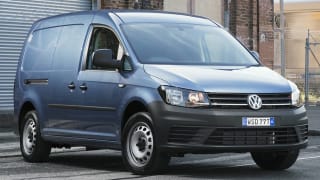Renault makes some great small capacity drivetrain combinations and this is one of them. Smooth, quiet and efficient, it provides brisk acceleration from standing starts even with a full payload, which is ideal for stop/start driving in busy CBD delivery zones. The steering is lightly weighted and responsive and the four-wheel discs provide reassuringly strong braking.
Tall drivers will find the airy and spacious cabin accommodating with comfortable seating and most controls well placed, including a smooth dashboard contour around the gearstick which the left leg often rests against. The large left footrest is also well positioned for this.
We loaded 415kg into the cargo bay, which with a full tank of fuel and driver equalled its 540kg maximum payload rating. On our notoriously bumpy test route the Kangoo's suspension handled this load with great composure, tracking straight without a hint of bottoming out or being thrown off-line by road surface irregularities or side winds.
Our only major gripe is the substantial tyre noise that emanates from the large rear wheelarches.
Using the excellent cruise control, the engine required only 2250rpm to maintain 100km/h and 2300rpm at 110km/h. It also performed well on our set climb with this payload. The EDC held fourth gear at 2000rpm and 60km/h for most of a 2.0km 12-13 per cent gradient, with only one self-shift down to third and 3200rpm to clear the steepest section. Engine braking was minimal on the way down, but that's not unexpected given the engine's small capacity.
Our only major gripe is the substantial tyre noise that emanates from the large rear wheelarches. It starts to become noticeable at about 40km/h and is highly intrusive (like the roar of a jet engine) by the time you reach 100km/h. We hope, like Renault's larger Trafic van, that a steel bulkhead becomes standard issue in future Kangoo models, not only as a noise insulator but also a superior cargo barrier than the current minimalist twin-tube frame behind the driver (a steel bulkhead is available as a dealer-fit option).
We also think the door mirrors should be larger, with at least the lower 40 per cent of the passenger-side mirror in wide angle view, given that the sliding side doors are not glazed and the driver has no rear-quarter vision over his/her left shoulder. Without the optional reversing camera, this creates a large and potentially hazardous blind spot.




















